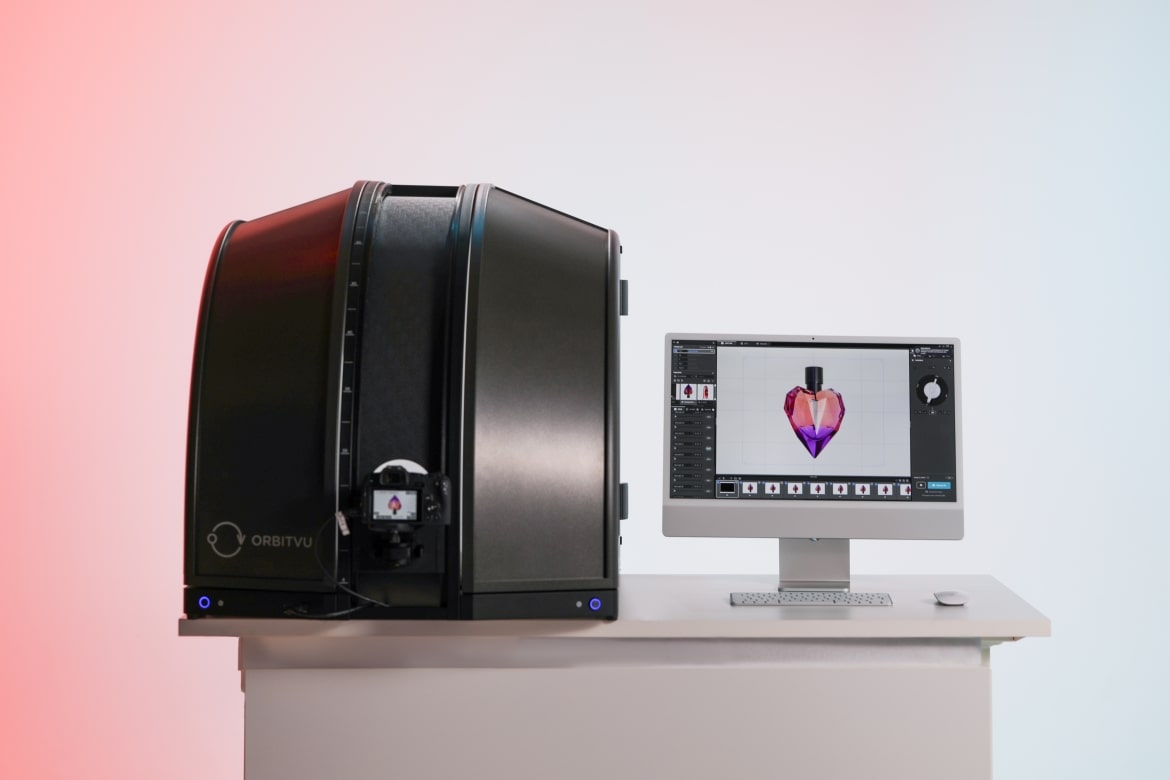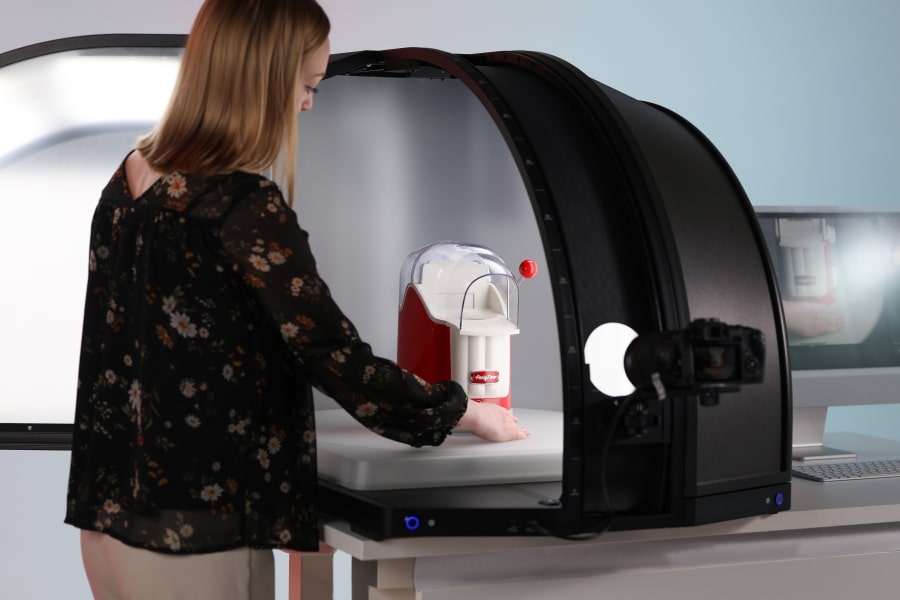The power of images in e-commerce – and how businesses can utilize them
Written by
Editorial TeamPublished on
Want to boost your e-commerce sales and stand out online? Discover how high-quality product images can captivate customers, build trust, and drive conversions—plus, learn the latest tech trends like 3D visuals and AI automation to take your visuals to the next level! 🚀 (Ad)

Commercial collaboration
In our digital consumer society, high-quality visual content is crucial for the success of e-commerce businesses. But why is that? What real impact do high-quality product images have on business success? And what are the key factors in creating compelling product photography?
Why images are more effective than text
Images are more powerful than text. There is plenty of scientific evidence to support this. Studies in cognitive psychology have shown that visual content attracts attention particularly quickly. It also requires less effort to process than reading text. As a result, an image leads to faster comprehension. Additionally, emotional engagement with the viewer is higher. Neuroscientific research further proves that visual stimuli activate larger areas of the brain—areas involved in memory, learning, and emotional processing.
The speed of information processing also differs significantly. Research suggests that we can process images in about 0.1 seconds, whereas reading a 200-word text naturally takes much longer—about a minute. There is also the so-called “picture superiority effect.” This concept states that we remember images five to six times better than text. Content that combines text and images is retained about 65% after three days, compared to only 10% for text alone. Biologically, this is explained by Allan Paivio’s Dual-Coding Theory, which suggests that the brain processes information through two distinct channels—one for visual and one for verbal data. When both channels are active simultaneously, memory retention improves, according to Paivio.
How visual content influences e-commerce customer behavior
All these findings are highly relevant to our visually driven society in general and e-commerce in particular. It is clear that we consume information far more through visual content today than before the digital era. Since the rise of mobile technology and social media, images and videos have become central to our communication. Because our brain processes visual content so rapidly, such material is incredibly effective for online retailers in grabbing attention, evoking emotions, and staying memorable for (potential) customers. Buyers spend an average of less than two seconds on product pages—proving how essential it is to convey information quickly.
Visual representations also play another important role in e-commerce: they build trust in an environment where customers cannot physically touch or try products. They allow buyers to assess an item’s quality, size, and features much more accurately. This reduces the risk of disappointment and product returns. According to studies, 96% of shoppers consider visual representations a key factor in their purchasing decisions.
The number and quality of images also matter. In a consumer survey, 59% of respondents stated that multiple images are crucial for their purchase decisions. Additionally, two-thirds (67%) valued high-resolution zoom functions. These facts further underscore the importance of authentic, high-quality product images.
Business perspective: The impact of high-quality images on key e-commerce KPIs
From a purely business perspective, investing in the quantity and quality of product images pays off. Shopify found that products with enhanced visual content can increase conversion rates by up to 30% compared to products with lower-quality images. Studies by Adobe Analytics and Curalate have shown that appealing product images are directly linked to lower bounce rates and higher customer engagement.
High-quality product images also play a crucial role in reducing return rates. Detailed visual depictions of key product features—such as color, texture, and dimensions—help customers gain a more precise understanding. This clarity minimizes unexpected discrepancies or disappointments upon delivery.
There are solid statistics to support this: a 2022 study by Adobe Analytics and Curalate found that improving product images—by using high-resolution, multi-angle, and zoomable images—can reduce return rates by up to 20-30%. This applies especially to industries where visual details are particularly critical, such as fashion, furniture, and consumer electronics.

Leveraging these insights: How online retailers can boost their success with high-quality visual content
More attention, greater trust, higher conversion rates, fewer drop-offs, increased customer retention, lower return rates—by now, it should be clear why investing in high-quality visual content for online shops and marketplaces is worthwhile. But how can this be implemented effectively?
First, businesses should review and optimize the quantity, quality, and resolution of their existing product images. The trend in this area is shifting toward vertical content due to the dominance of mobile devices with their 9:16 screen format.
Depending on the industry and product type, exploring additional technological options for product presentation can be beneficial. Examples include interactive 3D presentations, allowing customers to rotate and examine a product in detail on-screen. Augmented Reality (AR) takes this further, enabling consumers to visualize products in their real environment. This technology is useful for virtual try-ons of glasses and fashion accessories or for placing furniture within a room. Another option is the virtual creation of product variants—such as displaying 3D models of furniture in different material options.
Although 3D models and AR offer innovative possibilities, they are currently limited by factors such as cost (typically between 50 and 250 EUR per model) and rendering quality. A more affordable alternative is 360-degree product images (or spins), which also provide a realistic product representation but focus solely on presentation without supporting virtual try-ons or variant displays.
Enhancing quality and reducing costs with automation and AI
Technological advancements not only provide new visualization methods but also help e-commerce businesses create high-quality product images at lower costs. Modern photo automation solutions enable image quality comparable to a traditional photo studio—at a fraction of the cost. These solutions function like a photo booth, equipped with cameras, lighting, and a motorized turntable. The turntable allows automatic product movement, enabling 360-degree captures.
AI is also playing an increasingly important role in improving the quality and efficiency of product photography. In the automated photo setups mentioned earlier, AI assistants can autonomously adjust camera and lighting settings to match the specific product. This allows even non-photographers to take consistent, professional-looking images.
AI is also beneficial in post-production. One common application is automatic background removal or replacement. Additionally, AI-powered image enhancement tools can adjust contrast, colors, and sharpness automatically.
Recent advances in generative AI are particularly relevant in the fashion retail sector. For example, “Mannequin-to-Model GenAI” can overlay a flat clothing image onto a virtual or real model. Using image-to-video technology, the virtual model can then be animated or rotated. While these AI-generated results still require human post-processing, editing time is significantly reduced.
Conclusion
Visual stimuli are omnipresent in our society and play a critical role in consumer behavior. Simple, mediocre product images are no longer enough to remain competitive in e-commerce. Businesses looking to attract customers, increase sales, and reduce returns must optimize their visual content. Fortunately, advancements in technology are making this process easier and more cost-effective. Even companies with limited budgets can now professionally showcase their products.
About the author

Oliver Wanderscheck, General Manager and authorized representative of Orbitvu
Oliver Wanderscheck is the General Manager of Orbitvu GmbH and has extensive expertise in business management thanks to his background in business administration. After completing his studies, he successfully founded his own company and gained valuable experience as Director Marketing and Director Business Development in various companies. For the past ten years, he has managed Orbitvu GmbH, which he built up from the ground up. Under his leadership, Orbitvu has developed into one of the world’s leading providers of automated product photography.
Commercial collaboration
***


